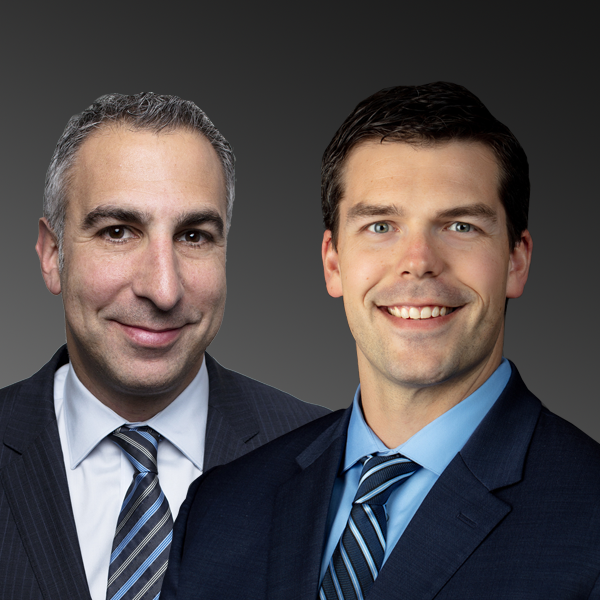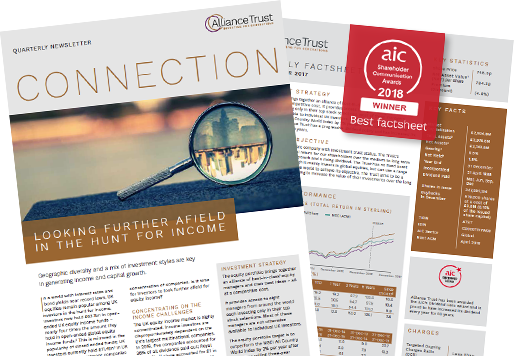As an investor, it’s all too easy to focus primarily on the short-term gains delivered by a portfolio, and pay little attention to the various risks attached to the whole investment process.
But good risk management on the part of the investment manager can actually enhance sustainable long-term returns, while poor decisions could put your capital in serious danger, as those who invested in Neil Woodford’s ill-fated funds at Woodford Capital found to their cost. So what do you need to be aware of when investing?
First, it’s important to understand that risk in this context is multifaceted. It extends far beyond the ‘investment risk’ that many private investors often worry about, which is actually volatility – the inevitable market fluctuations shaping the value of their portfolio in the short term. (It’s worth noting that volatility can actually be a source of opportunity, providing attractive entry points for quality businesses that can be unfairly punished in a general market sell-off). However, here we’re looking primarily at the various types of risk that could potentially affect your investment’s performance in the long term – and at how expert management of those factors can make a crucial difference.
As Henry Cobbe, Head of Research at Elston Consulting,1 points out, there are broad risks inherent in the structure and management of an investment fund or trust, “for example, around internal governance and conflicts of interest, or whether the spirit as well as the letter of various rules and guidelines is being observed. You can’t put a number on that, but it matters just as much.”
BOARD LEVEL
As an investment trust investor, you already have a head start on investors in open-ended funds, because investment trusts are structured as companies, and therefore have an independent board of directors working in the interests of shareholders, overseeing the manager’s strategy and performance.
While much of the board’s work is routine, it is also responsible for challenging and supporting the manager, and ensuring performance continues to meet expectations. Where that’s persistently not happening, the board has the power to take drastic action by changing the trust’s structure, instigating a new investment approach, or even firing the manager and appointing a new one.
Indeed, Alliance Trust’s Board led a radical overhaul of the venerable 133-year-old trust in 2017, appointing Willis Towers Watson (WTW)2 as multi-manager in the process. Its work was recognised with the accolade of ‘best board’ in the 2019 Citywire Investment Trust Awards.
PORTFOLIO LEVEL
While the board plays a crucial top-level role, the nuts and bolts of risk mitigation sit with the portfolio manager. Here, the inherent advantages of a multi-manager structure come into sharp focus.
For conventional single-manager funds, one of the biggest risks is that the manager could quit. It’s particularly worrisome if the manager in question has been a successful lone operator, rather than a team player alongside other experienced managers.
Additionally, in concentrated portfolios with large holdings in a relatively small number of securities, there’s the danger that any specific stock or sector that ‘blows up’ will do serious damage to the portfolio.
“With a multi-manager portfolio you don’t have those dangers,” explains Mark Atkinson, Head of Marketing at Alliance Trust. “The influence of every manager is limited, so if one left, that would be a nuisance, but not a systemic threat to the whole portfolio. Similarly, while individual managers may run concentrated subportfolios, the significance of any single stock is not enough to cause serious upset to the whole portfolio if it implodes.”
A multi-manager arrangement therefore provides a built-in element of risk mitigation through diversification. In Alliance Trust’s case, ten sub-managers are each running their ‘best ideas’ portfolio comprising 15-20 holdings3, so the portfolio as a whole is invested across upwards of 150 stocks.
However, when the risk management system works well – and for WTW as a global investment management and advisory firm working for some of the world largest institutional investors, it’s the foundation of the whole business – that process extends much further.
“One of the principles of WTW’s approach is that all investment managers invariably underperform at some point,” comments Simon Elliott, Head of Research at broker Winterflood.4
“However, by spreading the portfolio across a range of carefully selected managers offering a variety of approaches and styles, the risk of overall underperformance is reduced.”
Moreover, he adds, if WTW gets the right combination of managers to look after different chunks, the portfolio as a whole becomes less volatile, because the different approaches and styles negate each other to a greater or lesser extent.
That involves the portfolio manager identifying the optimal combination of complementary investment sectors, approaches and styles, and then the best, most sustainably managed investment firms within each group (in many cases managers not accessible to private investors in the UK).
A quick look at Alliance Trust’s submanager line-up reveals the diversity of focuses it captures, even within broadstyle ‘boxes’. The managers range from Black Creek, which focuses on business winners in out-of-favour industries, to recovery investor River and Mercantile, to Veritas, with a bias to thematic quality stocks.
“Probably half the managers could be described as value, but they are very different from each other,” says Atkinson.
“For instance, Vulcan buys high-quality companies, but waits for unexpected drops in the stock price, whereas Lyrical focuses on the cheapest stocks, looking for those with turnaround potential. And there are many different shades of growth manager, too.”
The portfolio manager also has to work out the right allocation of capital to each manager. “WTW aims to give managers equal amounts of risk, rather than equal amounts of capital, so it will give less to a small-cap value manager than to a largecap quality growth manager, because one is inherently more risky than the other,” observes Atkinson. Regular rebalancing between managers is necessary, in order to maintain the optimal distribution.
Of course, even with the most diversified portfolio there are numerous macroeconomic influences – from interest rate movements to regional strength or geopolitical strife – that can potentially wrongfoot a portfolio and jeopardise performance relative to its benchmark.
“It’s very hard to get those macro calls consistently right, so WTW’s approach is basically to avoid placing big bets on any aspect of the market (by weighting the portfolio towards different regions or styles for instance), and instead to leave it all to individual stock selection, which is where it’s been shown good active managers can add value over the very long term,” Atkinson says.
Certainly, there’s evidence that in the long run, the effect of style differences is negligible on performance. WTW points to the fact that over the 45 years to April 2021, the S&P 500 growth index has returned 11.7% a year on average, whereas the S&P 500 value index has returned 11.4%.
“With such a marginal difference between the two passive approaches to investing by style, a better way of outperforming the market consistently over time is through skilled stock selection, even if it is possible to benefit in the short run from having a style bias,” says WTW Global Chief Investment Officer, Craig Baker.
Elliott points out that such an approach “should appeal to investors who have a preference for a return profile more in line with global equities overall, rather than being prepared to endure the highs and lows that can be characteristic of other strategies.”
He adds, “WTW’s knowledge of the investment management industry leaves them well placed to select a roster of complementary investment managers that, when blended, offers the chance for long-term outperformance, but with a lower volatility than can be found with a single-manager approach.”
STOCK-SELECTION LEVEL
For the individual sub-managers within the portfolio, the focus is on getting the stock selection right. “In a portfolio like this, the managers are not asked to worry about relative performance; they are very much assessed according to absolute returns,” says Atkinson.
He makes the point that WTW quite deliberately doesn’t publish the individual managers’ returns, as it helps to avoid the pressure of unhelpful comparisons, and the risk that managers will change their investment style to try to boost shortterm performance.
“The key for them is really to stick to their knitting, because that style is why they were selected in the first place,” he adds.
One example is Lyrical, a US deep-value boutique fund manager, which has had a very difficult time for most of the four years it’s been on the roster – dramatically underperforming other managers, despite doing well relative to the style benchmark. When WTW scrutinised the Lyrical portfolio very closely, however, it became clear that the stocks in it were profitable, strong choices; they just weren’t liked by the market.
That all changed with the vaccine rally last November, which shunted value stocks back into the market limelight. “Lyrical has outperformed by 40% since then,” says Atkinson. “WTW stuck with it throughout that long period of underperformance, because it was doing what it was supposed to do.”
One rapidly evolving element of any fund risk profile concerns environmental, social and governance (ESG) issues. As Cobbe observes, “Increasingly, ESG considerations are being articulated as a risk factor, as well as a values statement.”
Climate change in particular represents a huge financial risk for any business caught on the wrong side of it. For instance, a company might find its reputation had been tarnished because it was seen to be dragging its feet relative to competitors in improving its carbon footprint. Or it might lag in terms of implementing new climate regulations, again indicating a reluctance to embrace the move toward a net-zero environment.
Certainly for WTW, the long-term financial risks inherent in a business’s potential exposure to climate change risks, all have to be weighed up by the sub-manager in assessing that company. But the focus is on identifying businesses that are taking the issues seriously and embedding good practice, rather than on finding squeaky-clean stocks.
“That means Alliance Trust will end up owning some ‘dirty’ stocks,” says Atkinson. “For instance we have BP in the portfolio, and Anglo-American, but the managers argue that they are doing the right thing in relation to ESG. They have business strategies that will make them better ESG stocks in the long run. Against that, there are other dirty stocks out there that we wouldn’t touch, because they don’t have a plan to get on the right side of the coming changes.”
Indeed, he adds, future manager changes within the WTW portfolio could well be for ESG reasons, if it becomes clear that an existing sub-manager in this rapidly evolving area is doing less well than competitors in its assessment of the ESG risks attached to stocks. With more than 70 climate change specialists providing guidance and analytical tools, WTW is well placed both in its ability to challenge existing managers on stock choices, and in terms of manager selection on ESG grounds.
Clearly, when it comes to risk control, there is a huge amount to think about. But if the manager gets it right, investors should be able to enjoy better returns than less effectively managed competitors over the long term. The bottom line as far as Alliance Trust investors are concerned, is that risk management is the life blood of Willis Towers Watson.
Faith Glasgow is a freelance writer and former editor of Money Observer.
More investment expertise






